Switzerland has more than 450 unique kinds of cheese. Does it surprise that the Swiss embrace the stereotype of being cheesemongers?
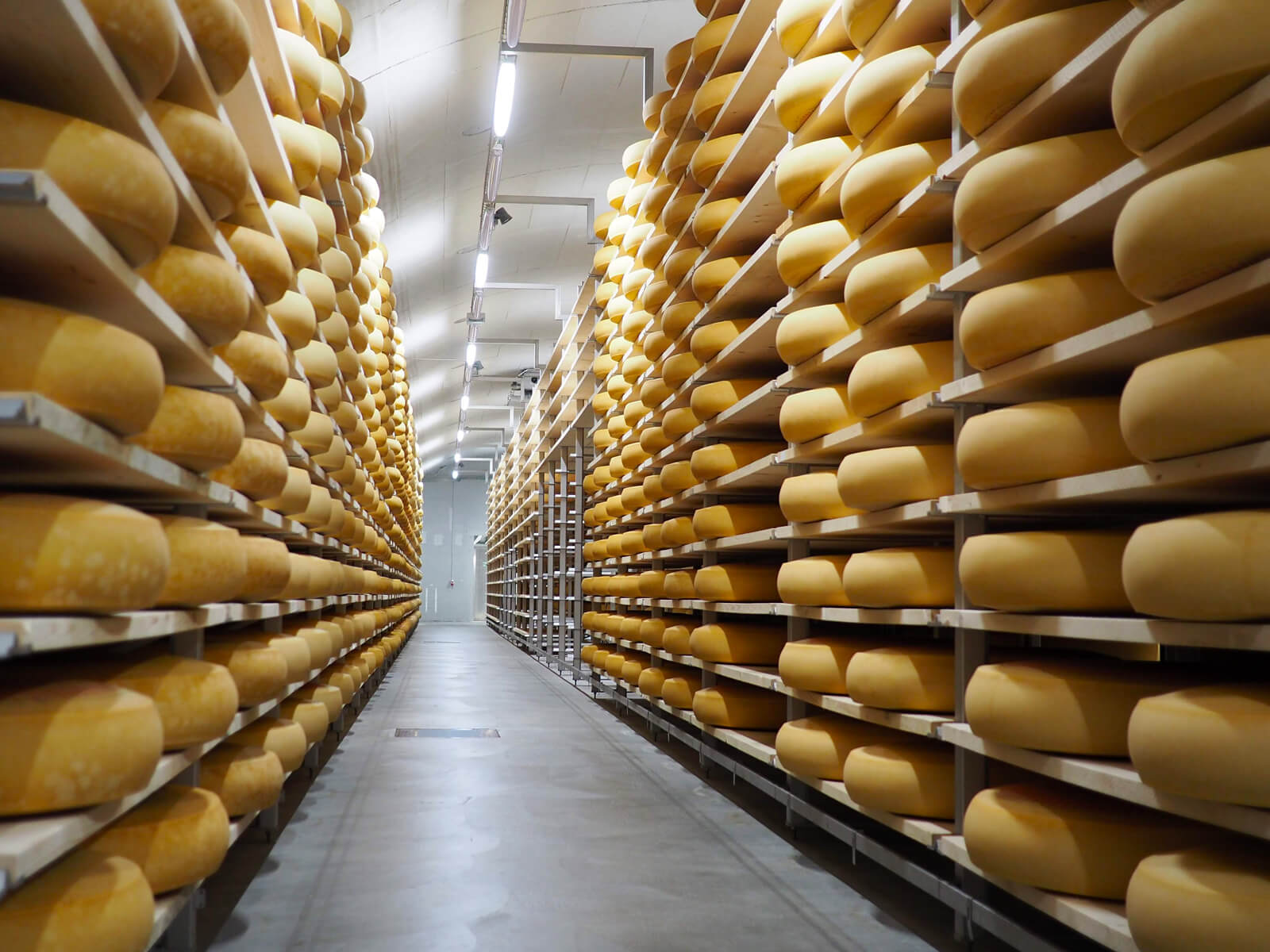
The sheer variety of cheese in Switzerland becomes evident if you ever visit a farmer's market. Even a regular cheese counter in a grocery store will have dozens of kinds of cheese on display.
The Swiss may not have invented yellow gold, but they have figured out many ways of consuming it. Be it melted as fondue and raclette or thinly shaved in the shape of flowers - each region has its way of cheese.
A comprehensive overview of cheese in Switzerland is overdue. So today, we are answering some of the most frequent community questions about Swiss cheese.
What is Swiss cheese called in Switzerland?
There are no silly questions, including this one. For many abroad, a block of yellow cheese with large holes is called “Swiss cheese.” It is likely a cheese called Emmentaler, produced in the valley of the River Emme.
All cheese made in Switzerland could be considered "Swiss cheese. But with all these varieties, each cheese has a name, and no single kind is called “Swiss cheese.”
Within each type of cheese, there are often various flavor profiles. Be it for the level of saltiness or the amount of punch, this is where savvy cheese marketers come into play.
For instance, Tilsiter grün is the mild brother of Tilsiter rot. And from White Label to Black Label, Appenzeller cheese comes in increasing levels of funk.
Is Swiss cheese made in Switzerland?
The answer is it depends. If by “Swiss cheese” you mean a yellow brick with big holes, it is likely produced abroad in a generic fashion. But if you are referring to any one of the 450 varieties that make Switzerland’s cheese heritage so unique, it has undoubtedly been produced there.
One way to tell its origin, especially when shopping abroad, is by the moniker “AOP” (formerly “AOC”). This seal of quality designates that the cheese is from a certified dairy.
Did you know that the Swiss turn nearly half of the milk into cheese? Every kilogram of cheese requires 12 liters of fresh cow milk.
What’s so special about Swiss alpine cheese?
Any cheese labeled “alpine” or Alpkäse must meet an essential requirement: the fresh milk is from animals grazing on alpine meadows.
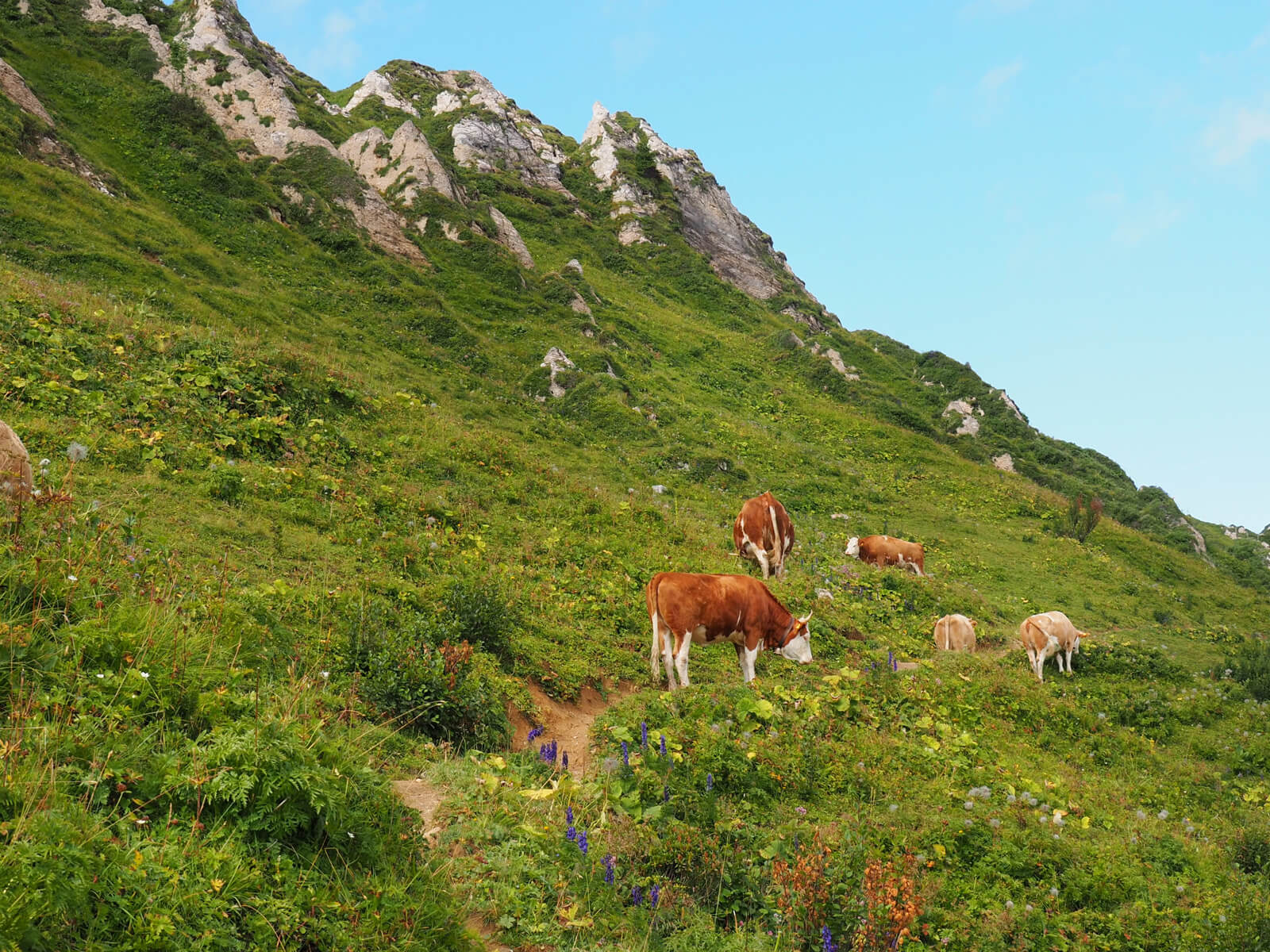
It does not take a lot of imagination to fathom why alpine cheese tastes so delicious. Being surrounded by nature, the cows, goats, and sheep have all it takes to produce the best milk.
The spring water, fresh herbs, wildflowers, and crisp air undoubtedly impact the milk’s quality. It infuses the cheese’s taste and gives each batch a distinct character and flavor profile.
Dairy farmers traditionally take their cows to an alpine meadow to spend the summer months. Every day, they would process the fresh milk into cheese, meanwhile caring about the aging loaves. This explains why Swiss alpine cheese is exclusively produced during the summer. And why it never gets exported - the quantities are too small.
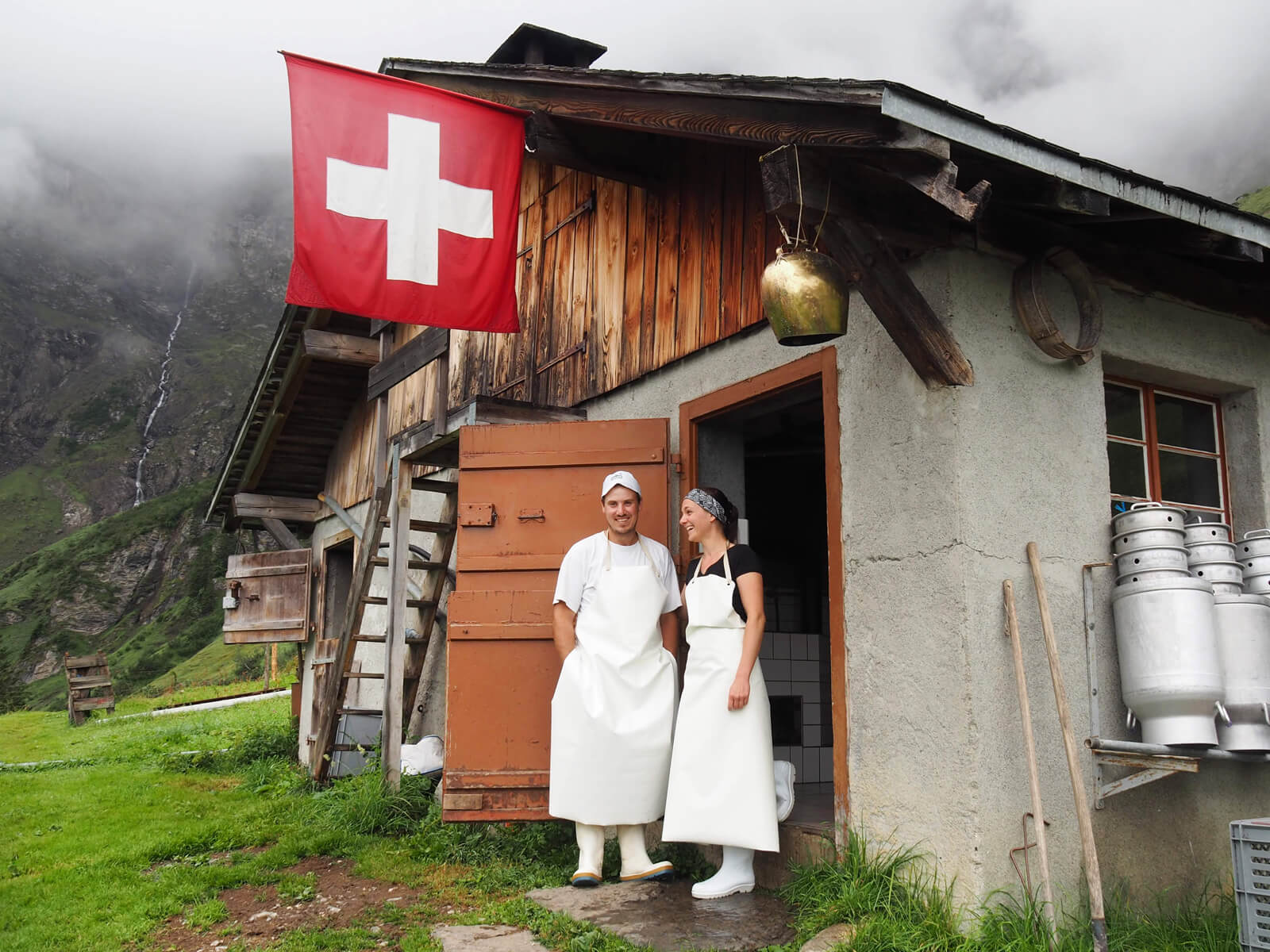
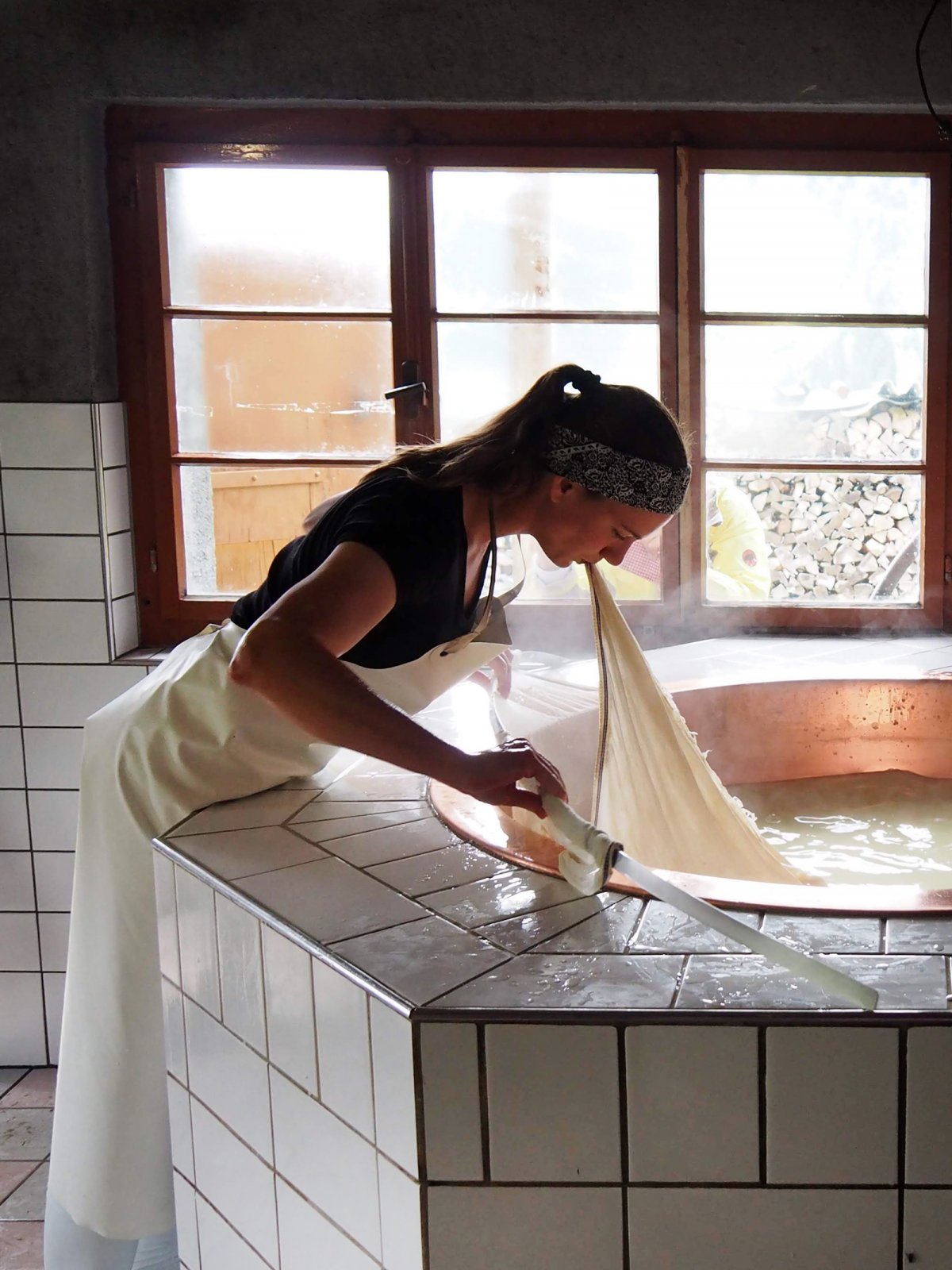
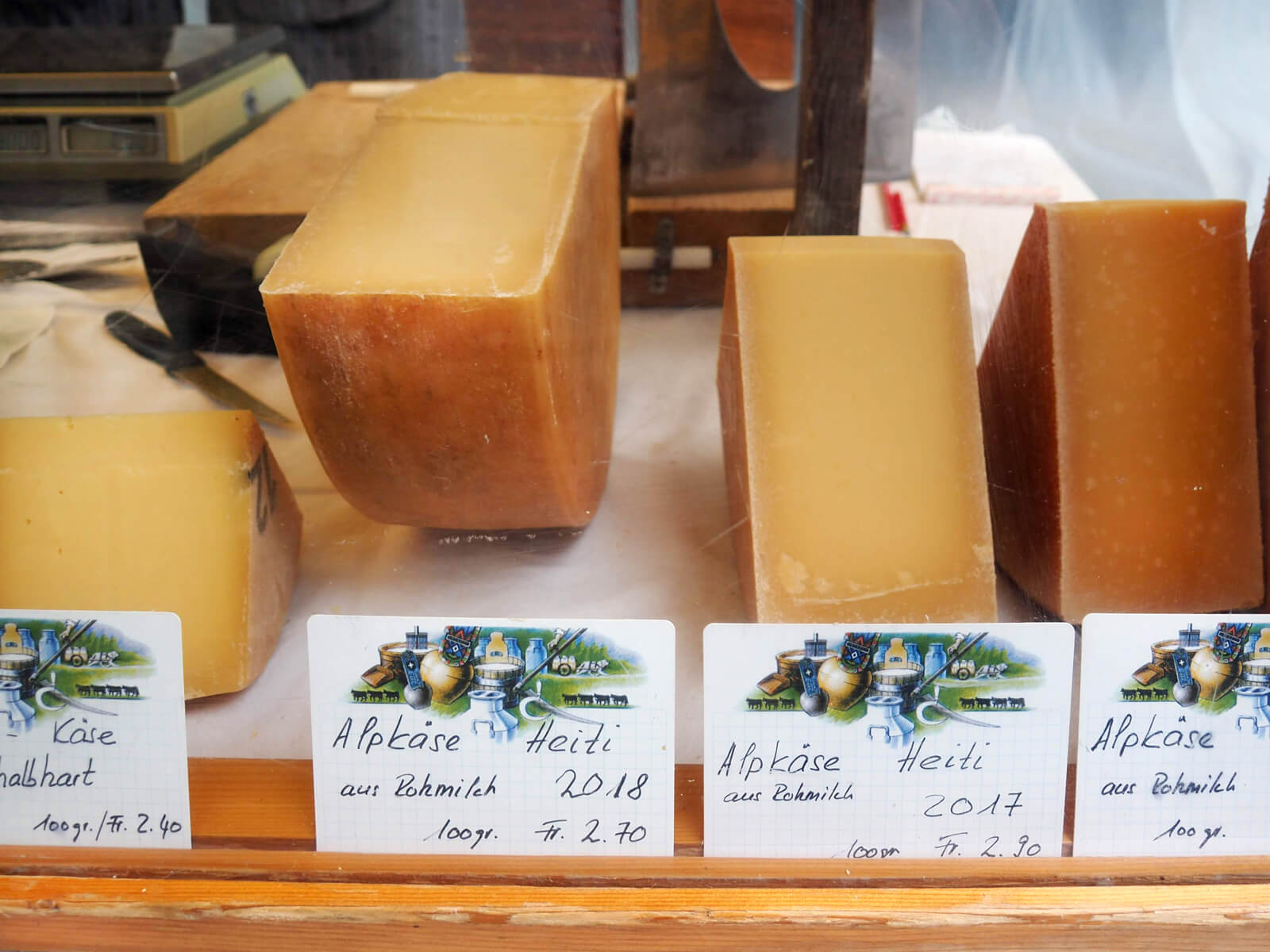
If you stop at a mountain pub during a hike, order a Käseplättli ("cheese plate"). Usually, they will serve local cheeses. And if the menu is not specific, ask the waiter/waitress for their names.
One of my favorite places to witness alpine cheese making is at the Musenalp cheese dairy in Uri, pictured above.
What’s the most popular cheese in Switzerland?
Sorted by their official categorization based on hardness, the most popular cheeses in Switzerland are:
And what’s the best cheese in Switzerland?
Each part of Switzerland has its own delicious local cheese products. One factor contributing to a cheese’s unique flavor profile is the type of milk used: cow, sheep, or goat.
In my opinion, Emmentaler AOP URTYP is a taste sensation. This relatively new variety of Emmentaler has a more pungent taste than the original. It is full-bodied and has its own character. Each wheel of Emmentaler AOP is made of only the highest quality natural ingredients. An additional selection process determines which loaf is granted the “URTYP” seal.
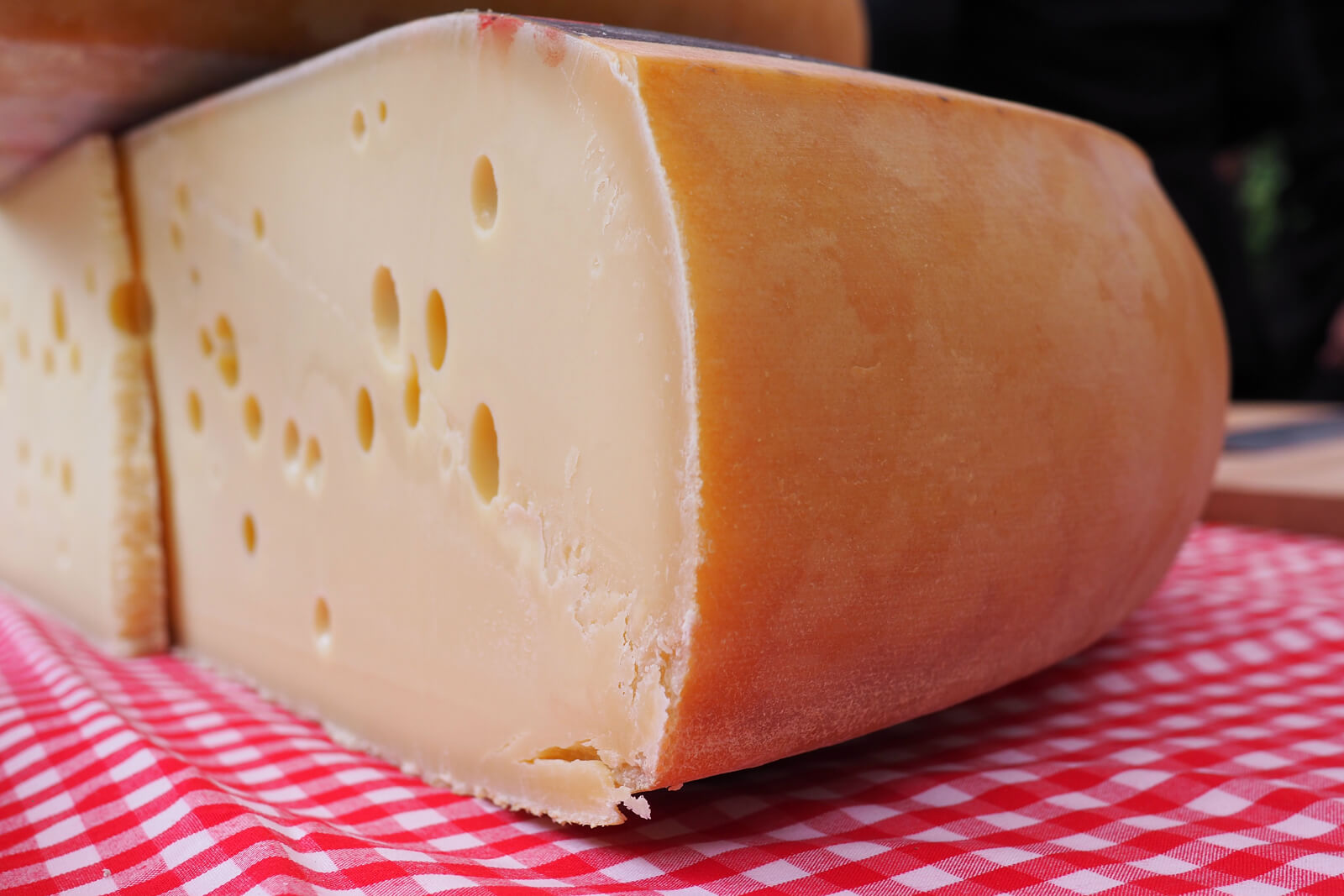
👉 My everyday Swiss cheese is Sbrienz, a hard and tasty variety. It is perfect for nibbling on or shredding on pasta or a casserole. Since it is so hard, you will do the salesperson a favor by asking for at least 150 grams, if not 200 grams.
👉 Der scharfe Maxx takes over five months to cure, giving it a feisty smell. Once in your mouth, notice the creamy texture and nutty flavors.
👉 La Formagella is a typical cheese from Ticino. I like its mild taste and rubbery consistency. Give it a try!
👉 Gruyère AOP is a characteristic Swiss cheese you should try, too. A five-month maturing process makes the sweet "doux" cheese. It is considered semi-salty after 7 to 8 months (“mi-sale”). After 9 to 10 months, it turns yet saltier (“sale”), and finally, after 15 months, the perfectly ripened “vieux” variety is born. Gruyère AOP is this Swiss cheese often used for cheese fondue and French onion soup.
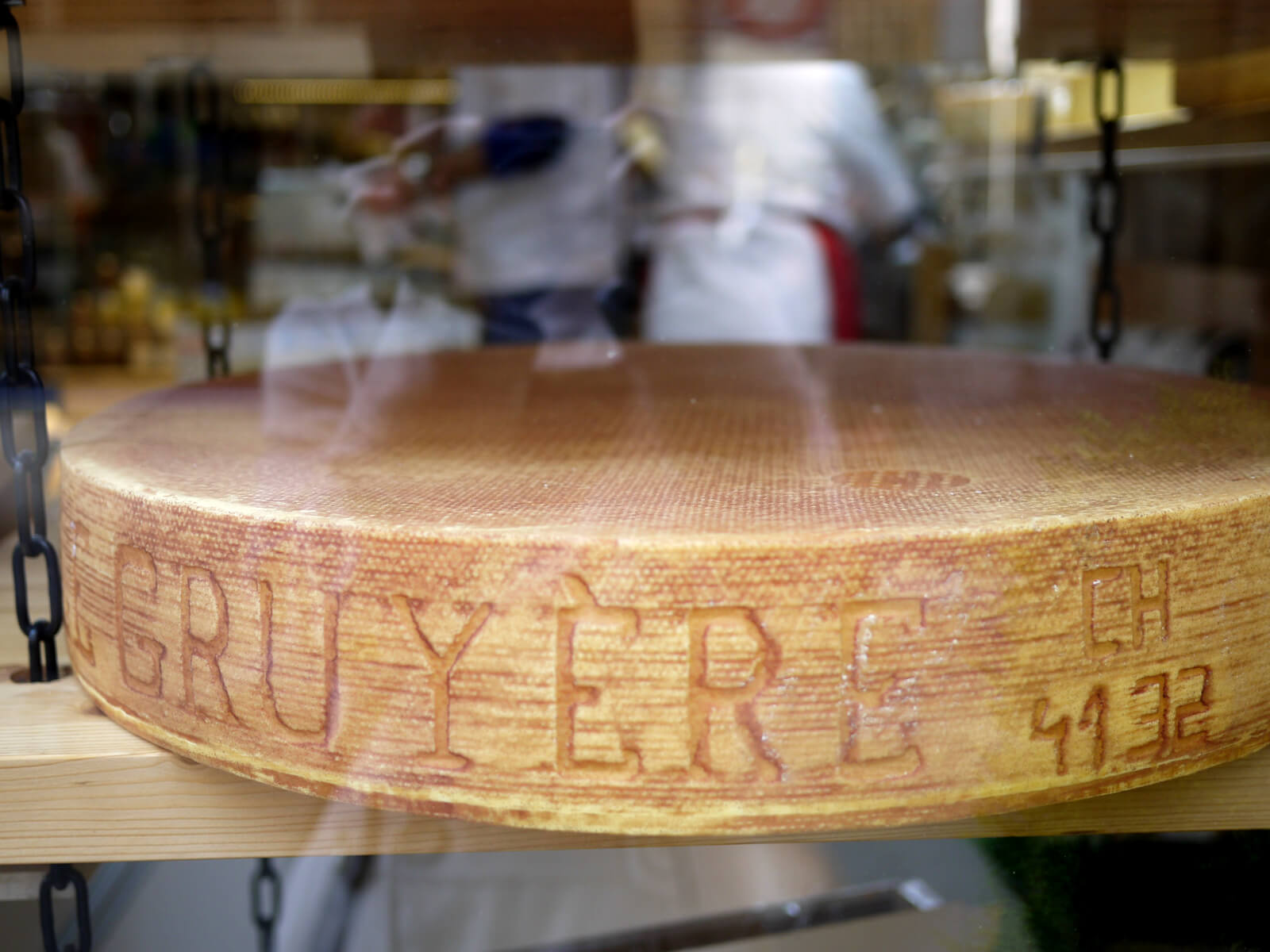
Psst! Are you in for a secret? This list would not be complete without the most secretive cheese in Switzerland: Appenzeller. The cheesemakers guard their age-old recipe like a state secret. The only known ingredient might be cow’s milk.
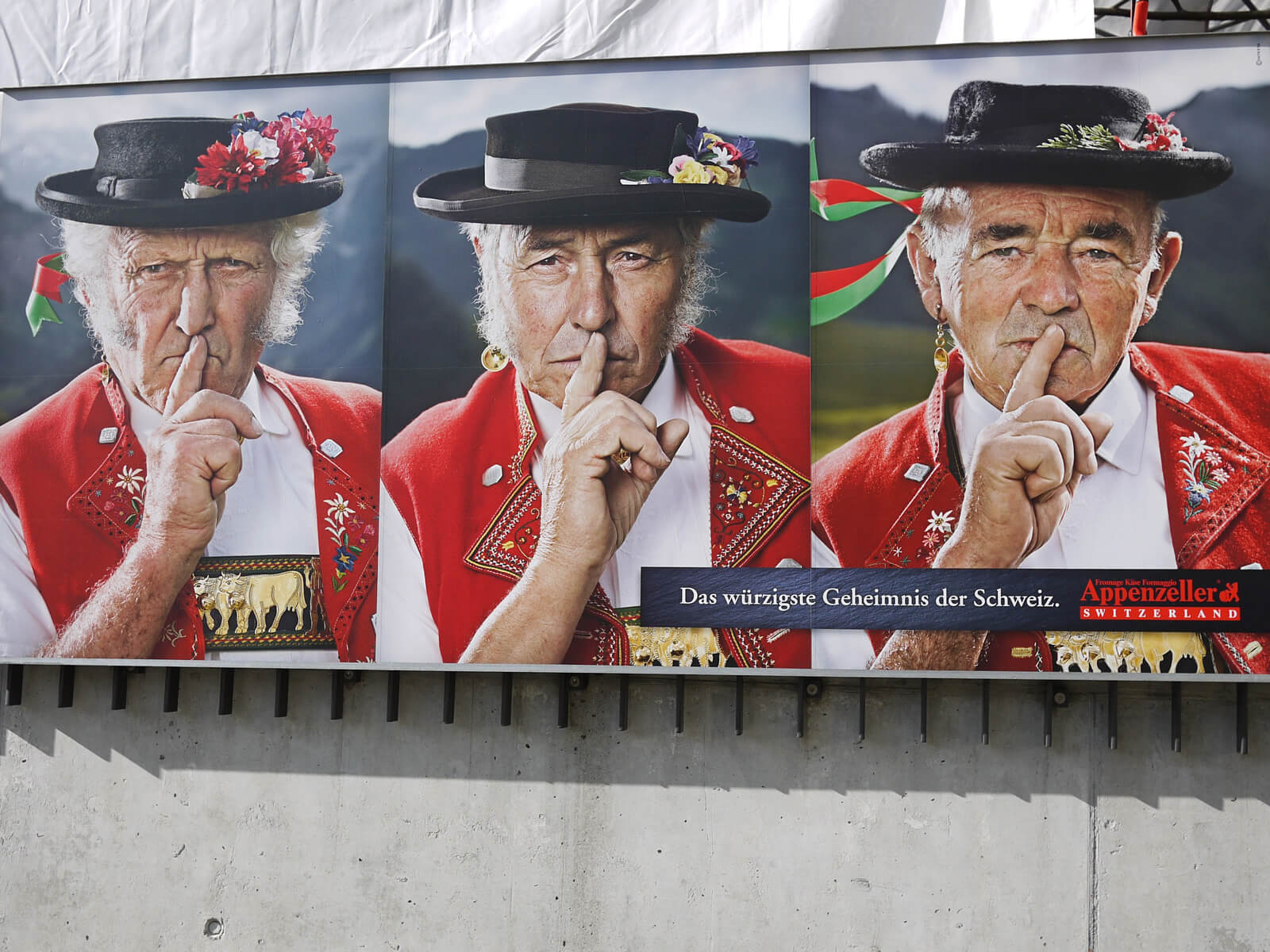
Can you recommend a cheese factory tour in Switzerland?
At least nine show dairies offer cheese factory tours in Switzerland, spanning all regions and tastes. Some of these invite you to witness large-scale industrial cheese production.
Meanwhile, other cheese factories are in rural areas where you can learn about alpine cheese production. And yet other cheese dairies are very small; you will only encounter them while hiking. We recommend the Alpine Cheese Trail in Engelberg for some guaranteed hits.
Find a cheese factory tour in Switzerland:
Appenzeller Cheese Factory
The Appenzeller Cheese Factory is a perfect place to learn about the modern cheesemaking process. Production tours by skilled guides take approximately 2.5 hours.
You can make a loaf of fresh cheese which is mailed home after eight weeks of aging. And finally, put the theory into practice by tasting Appenzeller delicacies at the restaurant.
Emmental Cheese Factory
We love the interactive tour which showcases the legacy of Emmentaler cheese. The best time to visit the cheese factory is in the mornings when the fresh milk is being heated up and processed into cheese.
One of the best ways of experiencing the rolling hills of the Emmental is by e-bike. Along the Emmental Cheese Route, you will learn all about the century-old tradition of cheese making.
La Maison du Gruyère
La Maison du Gruyère is not only a cheese factory but also a museum. Twice a day, local farmers will deliver fresh milk. And in front of your eyes, cheesemakers will demonstrate how the milk is processed into loaves of fragrant Gruyère AOP.
Ballenberg Historic Show Dairy
Inside a historical house dating back to 1780, a cheesemaker shows off old-fashioned tools and manual techniques. Try the local cheese by buying a Ballenberg Mutschli or some of the mild goat cheese.
Airolo Cheese Factory
Right beside the Gotthard road tunnel in Airolo sits the Caseificio del Gottardo. This dairy produces not only the typical Ticino cheeses but also butter or cream. The attached restaurant serves a sampler plate featuring delicious varieties such as Pontino, Sorescia, or Fiedo.
Some additional show dairies are:
Show Cheese Factory Engelberg, Maison de la Tête de Moine, Marbach Alpine Cheese Factory, Morteratsch Alpine Cheese Factory.
Any advice for cheese fondue in Switzerland?
Did you know that since the late 17th century, “fondue” was a way for peasants to use up hard cheese and old bread? The name stems from the French word “fondre,” meaning “to melt.”
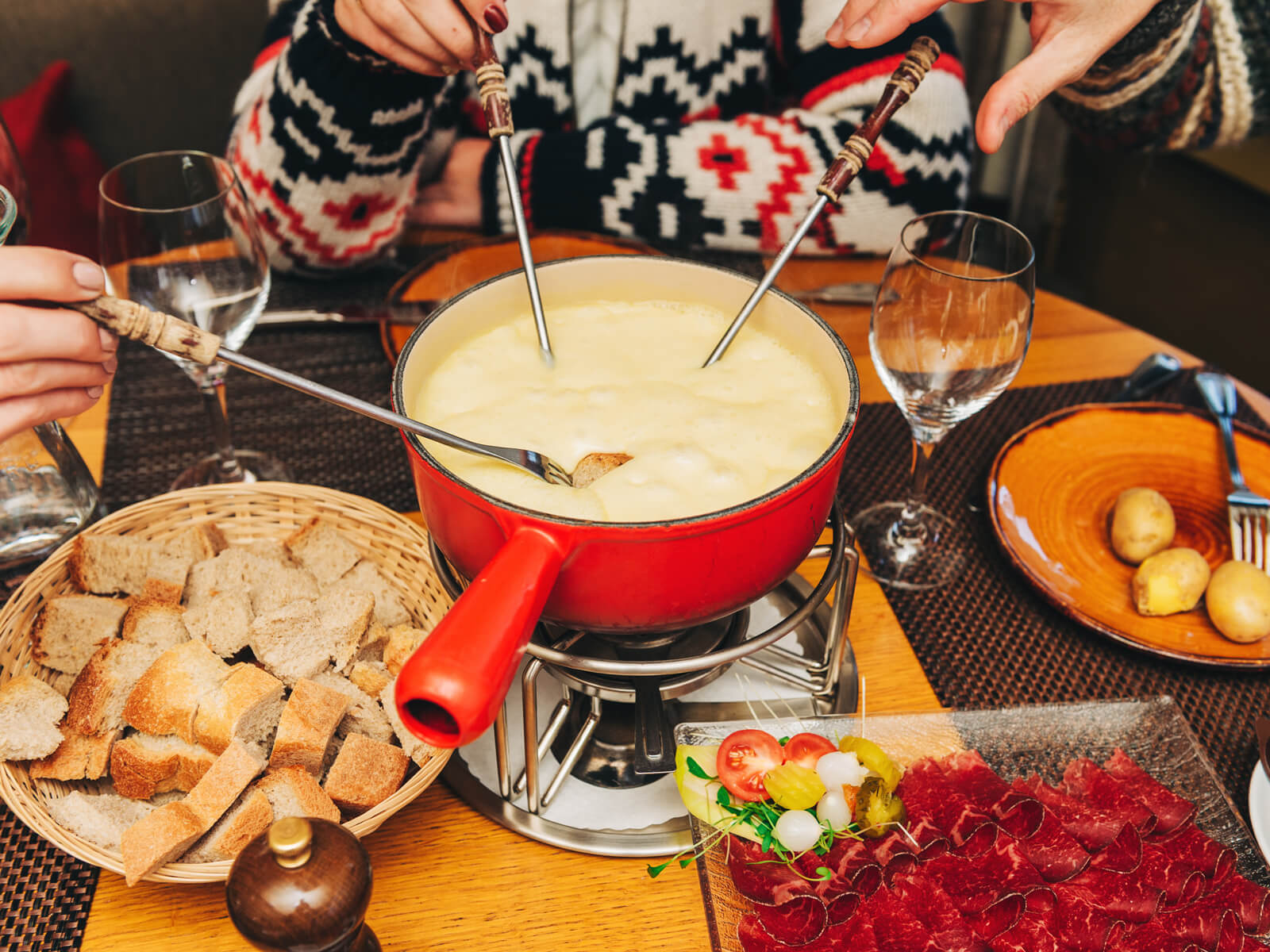
Many ask about the best cheese fondue in Switzerland. With each cheese blend being distinct, this will depend on your taste buds and tolerance for spiciness.
I advise walking into a local cheese shop and asking for a Hausmischung. The house blend is usually a good pick if you are unsure about which fondue to buy.
The moitié - moité variety, which stands for “half and half,” is a tasty blend of 50 percent Gruyère and 50 percent Vacherin fribourgeois cheese.
For a truly unique taste, try this exclusive Swiss beer fondue at home (recipe located at the bottom).
The following restaurants are slam-dunks for tasting Swiss cheese fondue:
If you do not want to stink up your flat or if you are unsure about how to prepare it, visit these restaurants in Switzerland for cheese fondue:
- Le Gruyérien in Geneva (this chalet is well worth the tram ride from the city center)
- Fondue Beizli in St. Gallen (offers a wide variety of specialty blends)
- El Paradiso Mountain Club in St. Moritz (they serve an exclusive blend with cheese from Simmental cows)
- Adler’s Swiss Chuchi in Zurich (one of the original fondue eateries in the old town)
- Chäsalp in Zurich (a very authentic restaurant inside a former stable)
- Fondue Tram in Zurich (a charming ride in a vintage tram - when there is no pandemic)
- Fribourger Fonduestübli in Zurich (they do deliveries)
- Walliser Keller in Zurich (they serve vegan fondue - as well as traditional fare)
What’s the deal with the Swiss cheese mafia?
The Swiss Cheese Union (Schweizer Käseunion) dominated the cheese game in Switzerland from 1914 to 1999. For 85 years, this conglomerate controlled pretty much all aspects of the cheese industry in Switzerland.
The Swiss Cheese Union was founded during World War I when milk and rennet were scarce. (The latter being a pivotal ingredient in cheese production.) Both milk associations and cheese traders were a part of the newly founded union. The oversight of the cheese industry continued after the war when the union engaged in price-fixing and monitoring of exports.
Under the rule of the Swiss Cheese Union, the landscape of cheese dwindled from thousands to only a handful of varieties. Only Emmental, Gruyère, and Sbrienz were allowed under the “Swiss cheese mafia.”
In the 1930s, the same union declared cheese fondue, the former peasant food, as the Swiss national dish. To drive demand, the union developed. Later, to further improve the selling of the cheese, the union developed the official recipe, which calls for equal parts of Emmentaler and Gruyère cheese.
This article gives some more insights. This episode of the Planet Money podcast is a treasure for anyone wanting to learn more about the so-called “Fondue Conspiracy.”
And is it true that music makes cheese tastier?
That’s right. From Mozart to Led Zeppelin, cheese wheels have their own choice regarding music. This discovery comes thanks to the somewhat odd-sounding Cheese In Sound experiment.
The students and cheesemakers behind this project asked the following questions: What would happen if cheese were exposed to different music types? Do sound waves influence the taste and texture of cheese? We have covered this phenomenon extensively: Can hip-hop music make cheese tastier?
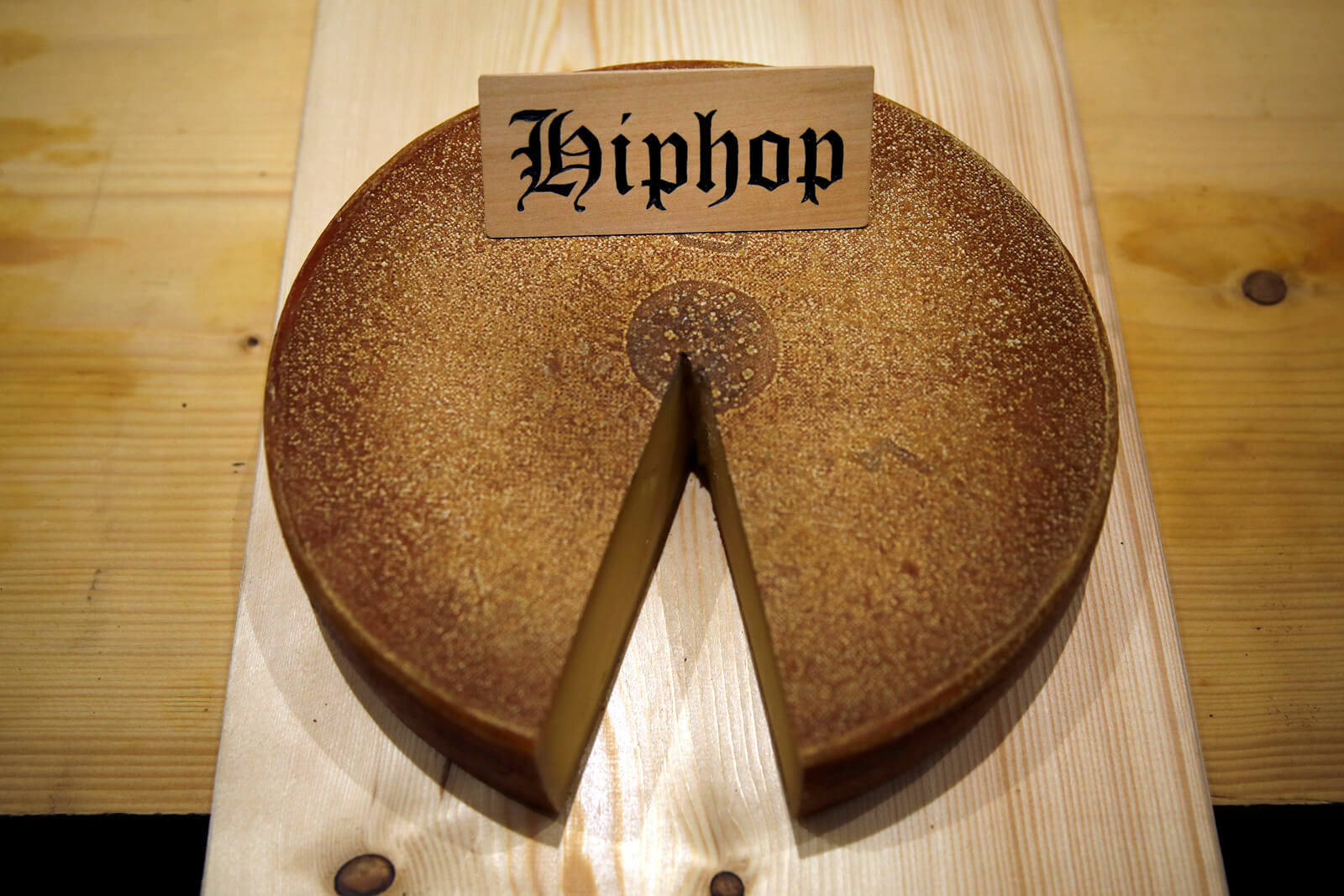
Key Takeaways:
🧀 Each region in Switzerland offers a unique selection of local cheese products. Look for a cheese platter, or Käseplättli, on the menu: this dish offers an array of local cheeses.
🧀 The cheese flavor is influenced by the type and quality of milk used in the production. Cow, sheep, or goat milk create unique flavor profiles.
🧀 The Swiss Cheese Union was a major influence in the Swiss cheese industry from 1914 to 1999. For 85 years, the union controlled almost every aspect of Switzerland's cheese industry.

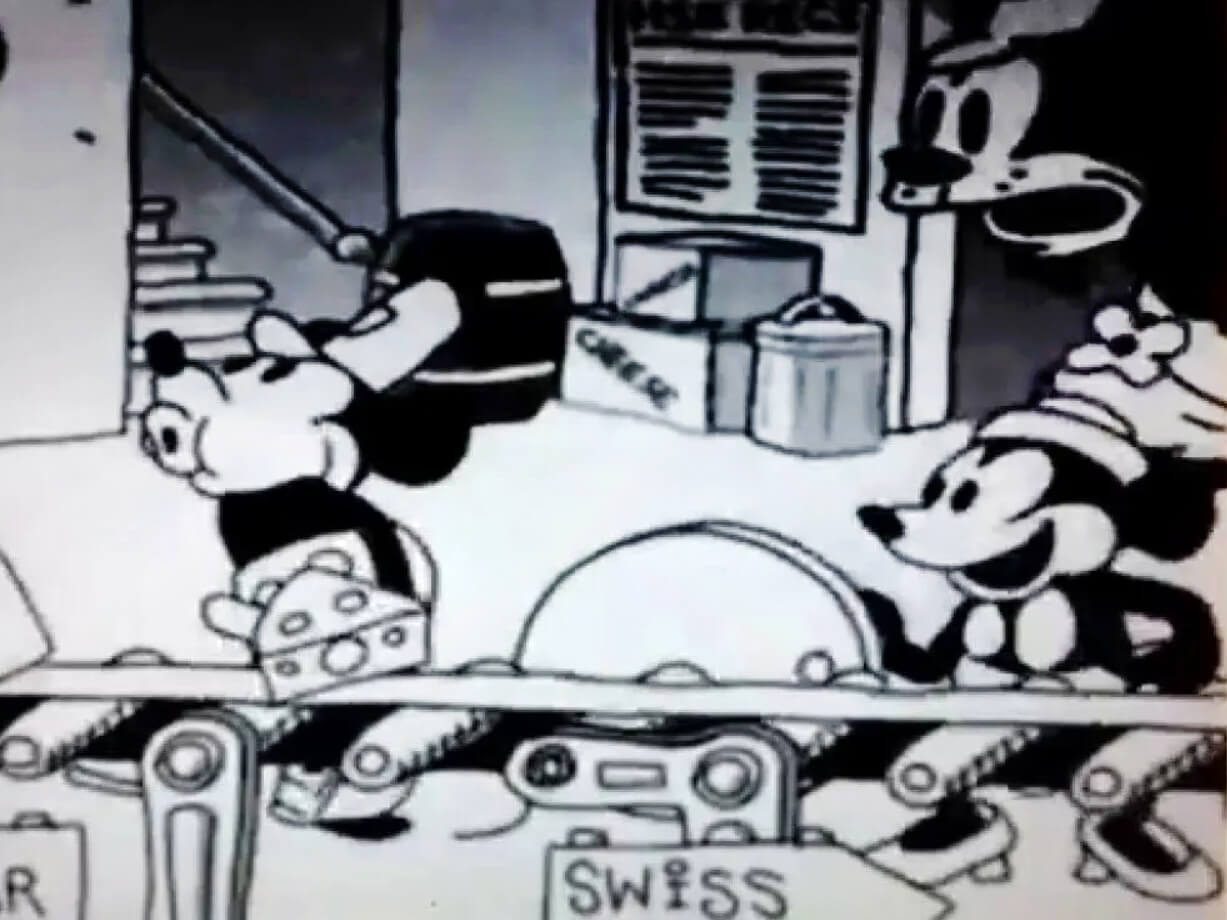
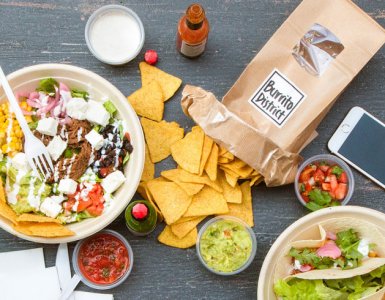
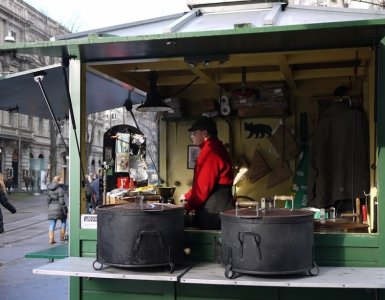
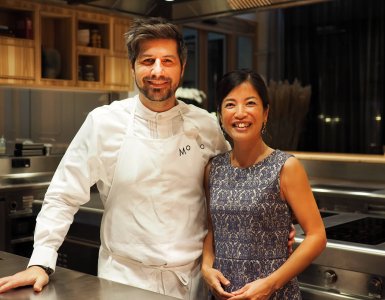

Add comment